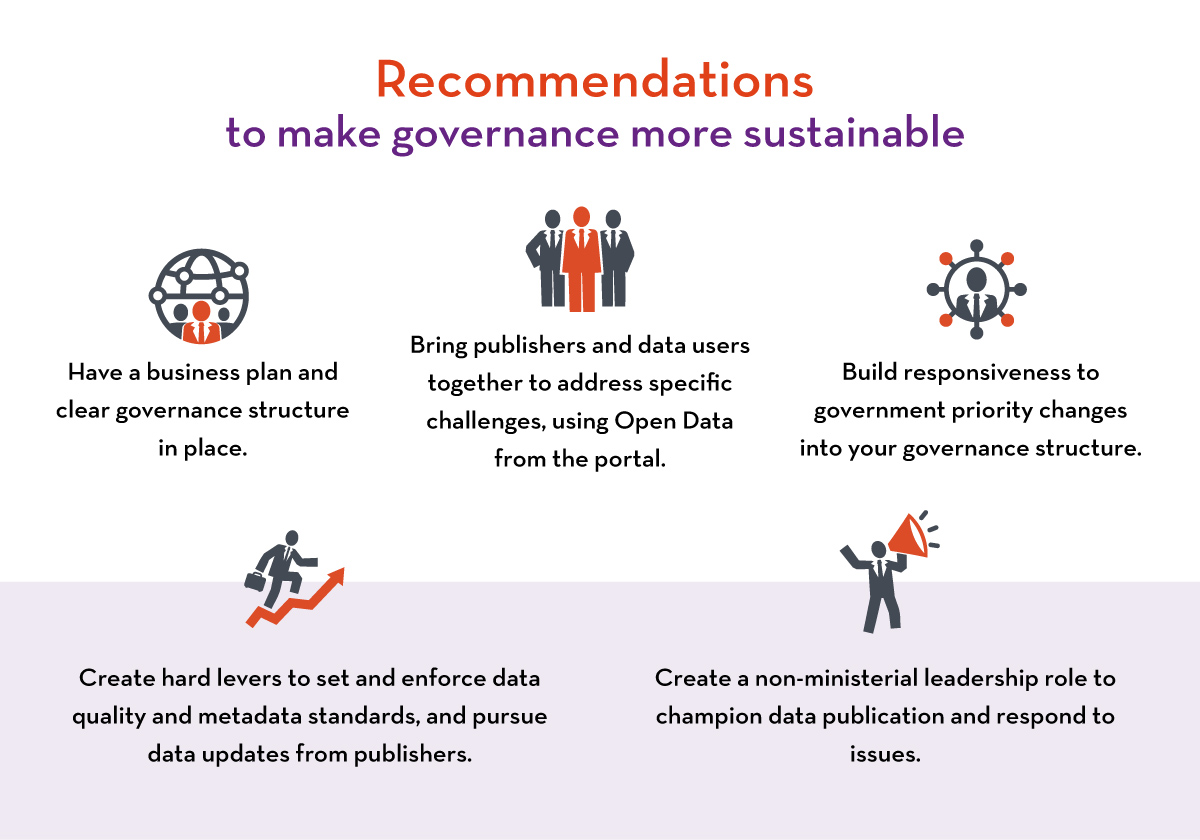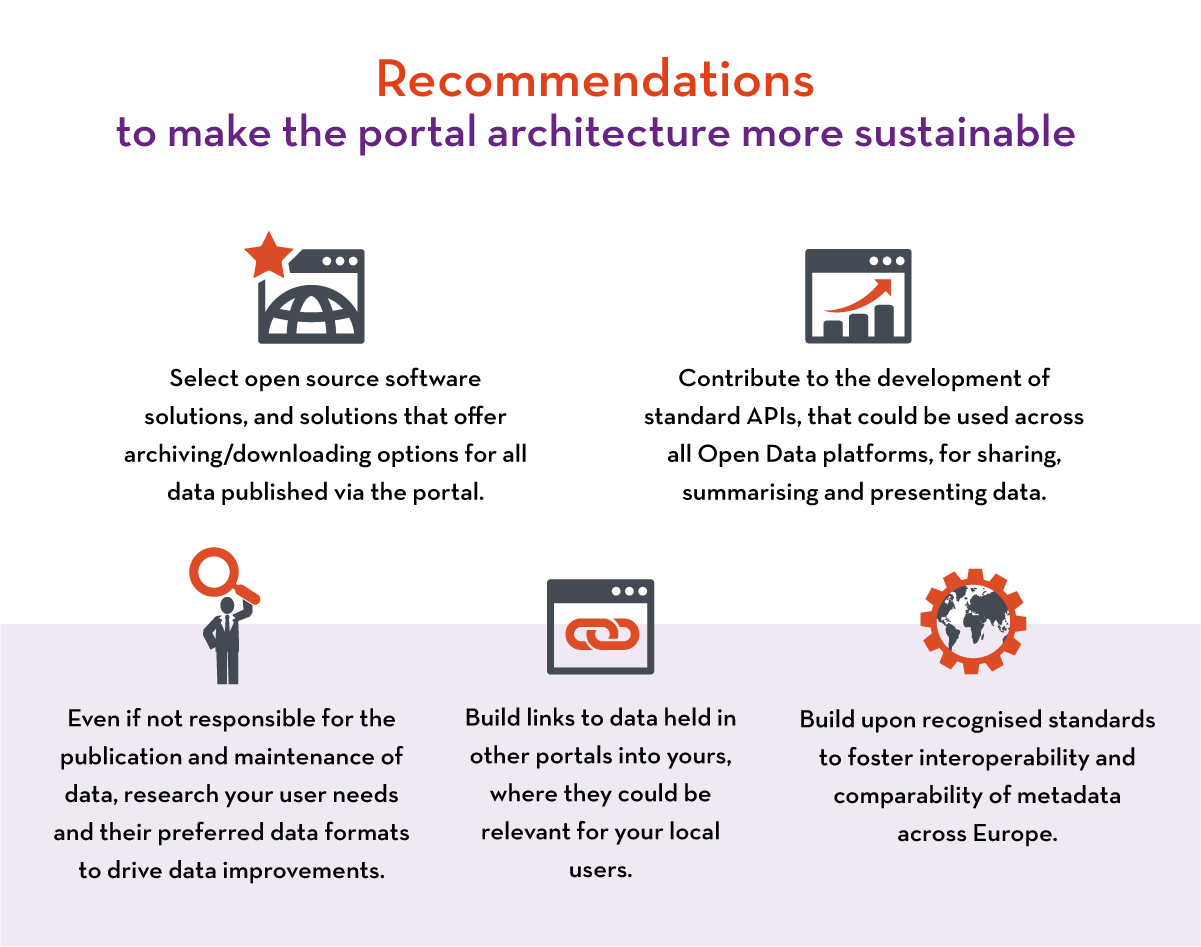Recommendations for open data portals: from setup to sustainability
Fecha de la noticia: 23-02-2017

According to the second European Commission's open data maturity report, EU+28 member states have improved 28.6% in their open data policies in the last year. This progress is translated into an overall maturity of open data portals of 64% across Europe. Yet most do not have coherent strategies for sustainability that address each aspect of how a portal functions: the governance, financing, architecture and operations that make a portal sustainable, as well as the metrics that can be used to monitor and evaluate progress. A necessary approach to make the platforms adapt to the challenges and changes of the sector.
In many cases, such portals have been rapidly created as part of a politically driven open data initiative, without feasibility studies, business cases, strategy or market research, not taking into account their sustainability. In response to this scenario, the Open Data Institute has recently published a study, within the European Data Portal's action program, which offers a set of recommendations to make European open data portals more sustainable.
This research is based on interviews with 22 representatives from seven countries -Austria, Germany, Italy, Norway, Spain, Romania and the United Kingdom- which included 11 national portal owners covering the seven national portals; two community-led regional portals in the United Kingdom; two regional government portals, Aragón Open Data and the Vienna Data Portal; the UK Office for National Statistics; and four members of three civil society organisations in Europe.
The research has several limitations that are important to note, as it used a relatively small sample –not large enough for rigorous quantitative analysis. Nevertheless, the seven countries surveyed were selected to be representative to offer a snapshot of portal developments at the national, regional and local level which may be applied across Europe.
Governance
The governance model for an open data portal shapes how it is financed, the extent of its influence on data publishers and re-users, and the resources it has at its disposal for maintenance, engagement and enhancements. These platforms are typically established by governments in the early stages of their open data initiative. In fact, almost all of the national portals sampled for this report were set up between 2010 - 2012, with an average age of five years, being established as part of a specific open data iniative, but without a market research that supports its financing.
This facts explains the rapid progress of open data initiatives in their early stages, being staffed close to the power-centre of government and able to fast-track spending. But to become sustainable, the governance model for an open data portal has to become embedded in usual government functions, and able to continue to adapt to changing government priorities.

Financing
All public sector open data portals need financing, both for the infrastructure of the portal and maintenance, as well as any outreach, training and support for publishers and re-users of data that is within the scope of the portal’s operations. A cost to be addressed and included in the financing model of the platform, which should also allow the team to manage and plan its strategy with a budget that guarantees a long-term service; with the necessary funds for future upgrades and improvements.
General speaking, open data portals tend to have less trouble securing financing for design and early development. Nevertheless, ensuring sustained funding for both maintenance and improvements can be difficult without having a clear strategy in place, understanding the publisher and re-user needs and a stable funding stream.

Architecture
The portal architectures is defined as the way how data is stored, published and made available. While open data portals tend to be set up at the beginning of an open data initiative, with financing for portal architecture, sustainability is not necessarily a key consideration when choosing a software solution that support the infraestructure.
As open data initiatives mature and data services and technologies evolve, ensuring the portal architecture is still fit for purpose and able to withstand service and funding changes becomes harder. This section of the report explores the best practice and makes recommendations for organisations looking to establish their own open data portal or upgrade an existing one, as the following chart shows:

Operations
The management of an open data portal can go beyond the technical infrastructure underpinning the portal, including the practices and procedures that ensure it provides access to the information.
Because of the nature of the service an open data portal provides, the portal owners are often required to be more open, transparent and adaptive to end-user requests -producers or re-users... This would brings its own challenges to the sustainable operation of an open data portal as the operations of a sustainable platform involve a portal owner running it day to day, ensuring that it continues to be responsive and useful for the community.

Finally, this report concludes with a set of recommendations to choose the appropriate metrics that allow the proper monitoring and analysis of the results of an open data portal; combining quality and performance indicator while analyzing other parameters such as metadata or contextual information.

This document is the first of two studies dedicated to the sustainability of open data portals. The second of them will be published by the end of 2017, and it will be based on a larger research sample, where a greater number of countries will be analyzed to compare their results and provide more detailed and practical guidance, which will be put into practice to test its usefulness and viability.











